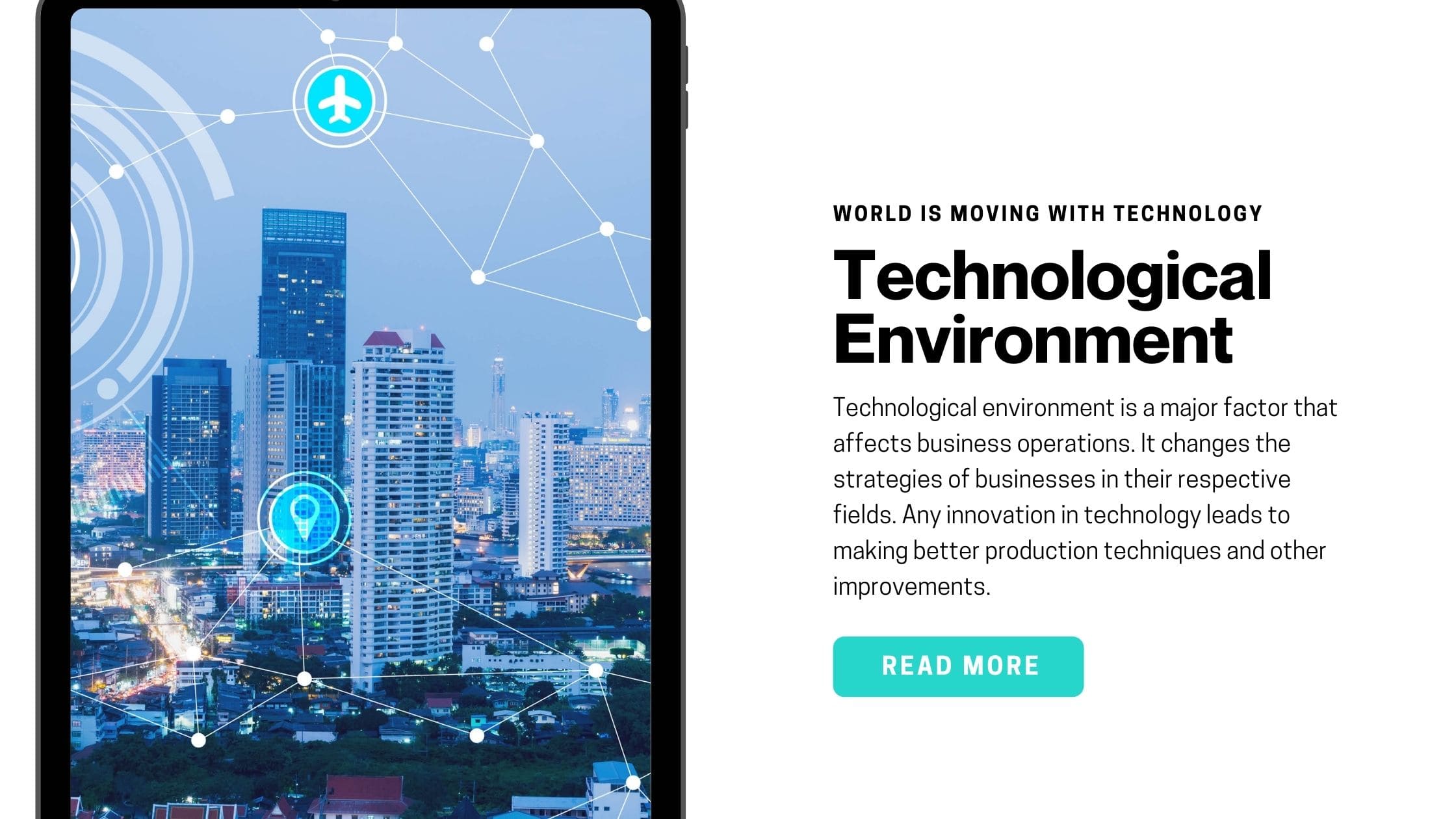We are going to discuss the Technological Environment: Types, Component, Relationship with business and human resources. Let’s start with some basics of the Technological Environment.
Concept of Technological environment
Technology is the making, modification, usage, and knowledge of tools, machines, techniques, crafts, systems, methods of organization, in order to solve a problem, improve a pre-existing solution to a problem, achieve a goal or perform a specific function. It can also refer to the collection of such tools, machinery, modifications, arrangements, and procedures.
Technological Environment means the development in the field of technology which affects business by new inventions of productions and other improvements in techniques to perform the business work.
Those technological factors which impact the business operation are called technological environment.
Types of Technology
Technology can be classified in several ways. For example, blueprints, machinery, equipment, and other capital goods are sometimes referred to as hard technology while soft technology includes management know-how, finance, marketing, SEO and administrative techniques. When a relatively primitive (traditional) technology is used in the production process, the technology is usually referred to as labor-intensive. A highly advanced technology, on the other hand, is generally termed capital-intensive.
Components of Technological Environment
Level of Technology
- Labour based Technology
- Capital based technology
The pace of Technological Changes
Technological changes influence organization in the following ways.
- It can make existing industries obsolete.
- It can rejuvenate (revitalize) the existing industries through product improvement or cost reduction.
- It can create entirely new industries.
- It can increase government regulation.
Technological Transfer
Technology transfer implies technology imported from technologically advanced foreign countries. Technology transfer can be through:
- Globalization (MNCs)
- Projects (Turnkey Projects:- ready for immediate use or operation)
- Trade( sale of equipment by the manufacturer)
- Training assistance (Bilateral and multilateral donors provide technical assistance)
Research and Development (R & D)
R & D is the essence of innovation. Customers except for new products of superior quality which are safe, comfortable and environment-friendly.
Relationship between business and technology
Technology is the backbone of running any successful business in modern society. The kind of business setup we have today requires an entrepreneur to take note of the ever-evolving technology and keep pace. Many businessmen would be sincerely surprised at the degree of impact modern technology can make in their business.
Impact of technology in business
Positive Effects
- Productivity
- Competitive advantage
- Innovation
- Increase in profit
- Customer value
Negative Effects
- Capital Burden: Huge investment
- The threat of quick replacement
- Increase in cost: regular maintenance
- Need for skilled manpower.
Human Factor and Technology
Human Factors (Ergonomics): Human factors are the study of how humans behave physically and psychologically in relation to particular environments, products, or services. In other words, Human Factor is the scientific application of knowledge with the aim of making products, systems, services, and environments safe, efficient and easy to use.
Ergonomics is the science of the design of equipment, especially so as to reduce operator fatigue (tiredness), discomfort and injury.
Effective implementation of technology is totally depending on the human factor. Their knowledge, skills, and abilities determine technology effectiveness and efficiency. Technology must address natural (physical and mental) abilities and ensures success and safety. It should add value to human operation. There must be a close match between technology tech news and human factors for enhancing effectiveness.
Suman(Kul Prasad) Pandit is an accomplished business professional and entrepreneur with a proven track record in corporate and start-up sectors in the UK and USA. With a focus on sustainable business practices and business education, Suman is highly regarded for his innovative problem-solving and commitment to excellence. His expertise and dedication make him a valuable asset for businesses seeking growth and success.

